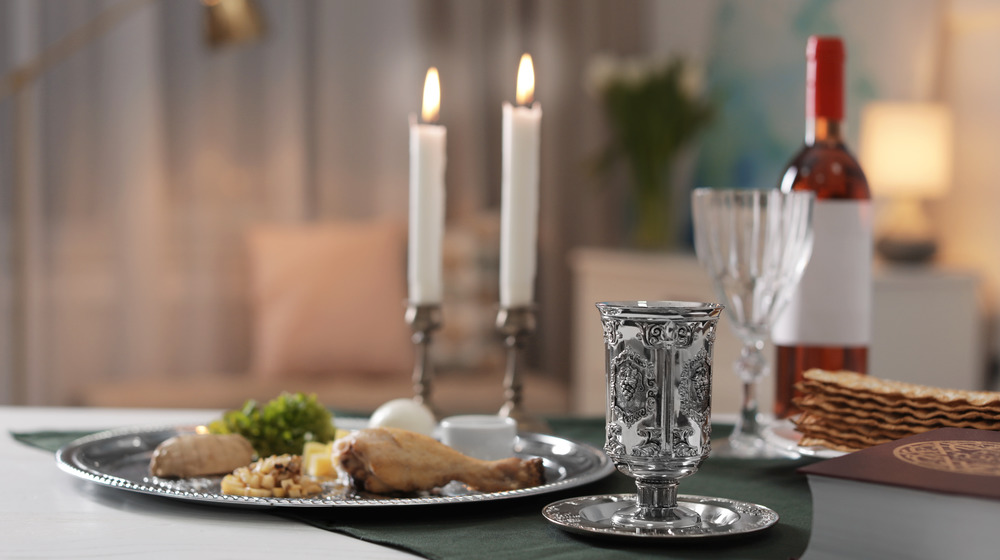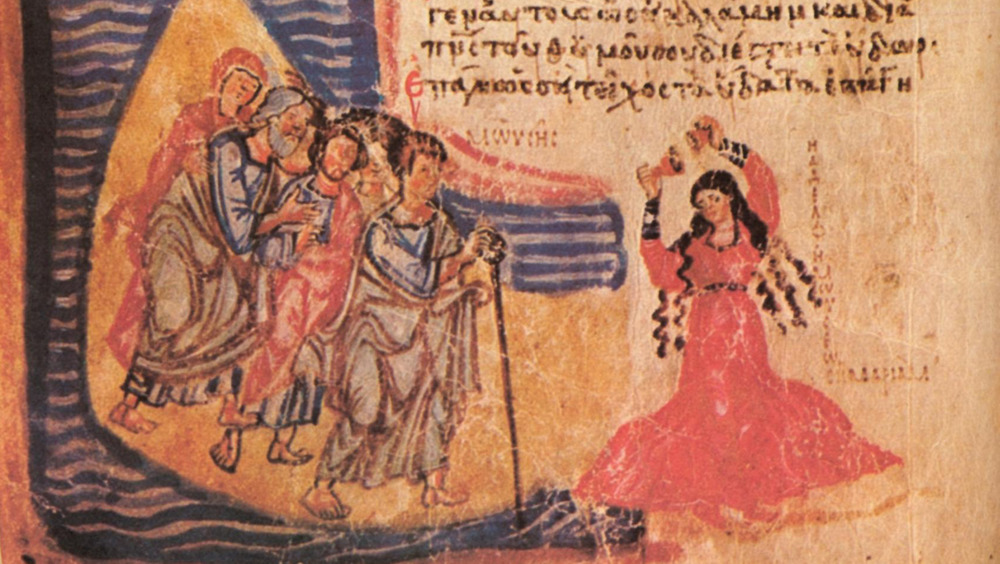The Feminist Reason Some People Are Adding An Extra Cup To Passover Seder
In the last three decades, a new cup has started to be used in some rituals of the Passover seder. My Jewish Learning describes the presence of the cup, called Miriam's Cup, as a companion to the traditional untouched Elijah's cup. Only, Miriam's Cup is filled with water, and at some seders, everyone takes a sip from the cup. This differs from the wine used for Elijah's cup, which is often put back into the bottle afterwards (via Chabad).
Beyond that, because it's a fairly new ritual, there's no fixed set of rules for using Miriam's Cup. Some fill the cup with water from a pitcher, while others fill it with a bit of water from everyone's individual glasses. Some begin with Miriam's Cup, some include it for the recitation of the Ten Plagues, and some close the seder with it. My Jewish Learning emphasizes that you can "use any one or any combination of these ideas for incorporating Miriam's Cup into your seder."
"I see Miriam's Cup as a profoundly important corrective of a previously misperceived, unbalanced story, and a long overdue recognition of a woman who, like many Jewish daughters, has always taken second place to her stellar brothers," Letty Cottin Pogrebin, a founding editor of the liberal feminist magazine Ms., stated in a piece appearing in The Jewish News of Northern California. It is a move to redraw the fact that Jewish women played a large role in the events leading to the Exodus and beyond — a fact that's often overlooked or sidelined in commemorations.
What Miriam's Cup represents during seder
The reason Miriam's Cup is filled with water, rather than wine, is that in Jewish tradition, she is strongly associated with water. Miriam's Cup, a website that presents their own version of the Miriam's Cup ritual, includes in their invocation of the cup that during the 40 years the Israelites spent in the desert, God granted them a well of water that would follow their wanderings specifically due to the prophetess Miriam's merit (via My Jewish Learning). This symbolically mirrors how, in the words of their suggested ritual, "Miriam's optimism and faith also was a spiritual oasis, giving the Hebrews the confidence to overcome the hardships of the Exodus."
In her piece, Pogrebin goes further, listing how Miriam, in defiance of the Pharaoh's orders, placed the infant Moses in a basket that floated down the Nile and how she later led the fleeing Israelites through the parted waters of the Red Sea with her timbrel and dancing, as pictured above. The three different forms of water associated with her all represent hope in the midst of hardship and persecution, which, in the view of those who have included Miriam's Cup in their seders, makes it an eminently suitable addition to the seder's rituals.

